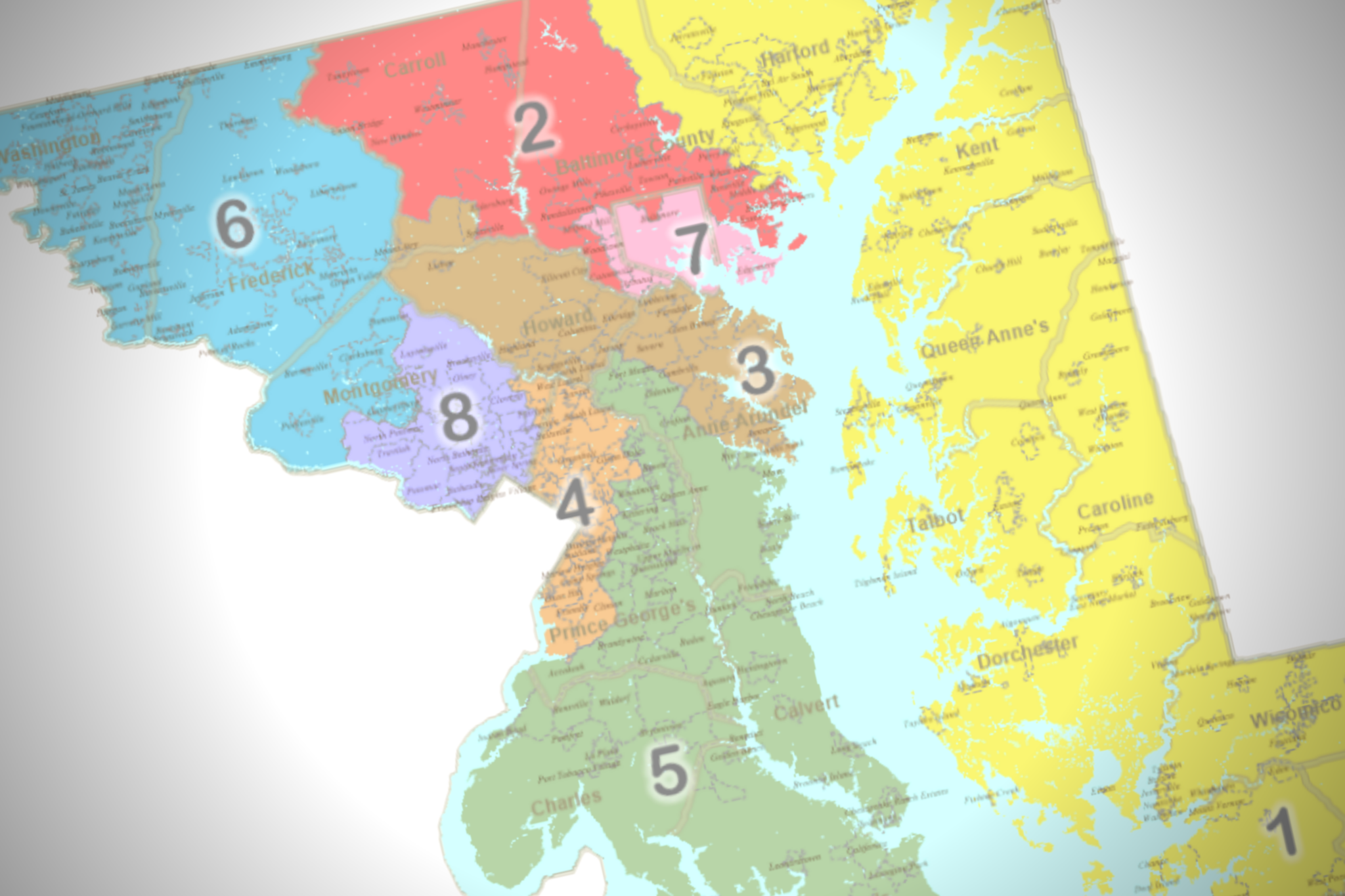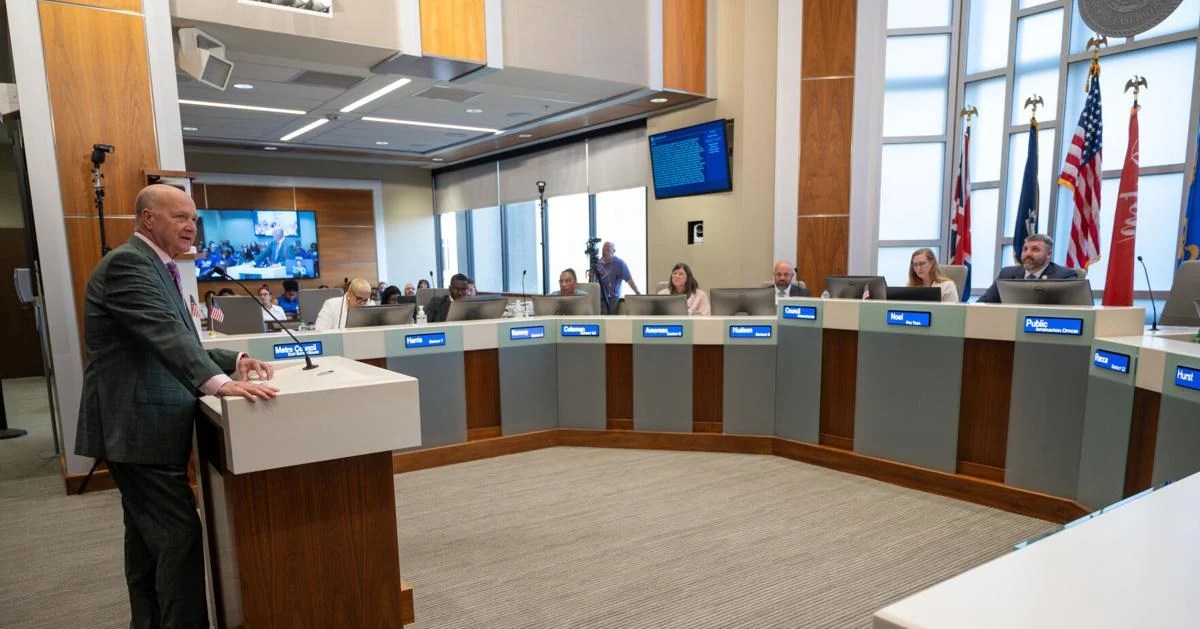Copyright WTOP

This article was republished with permission from WTOP’s news partners at Maryland Matters. Sign up for Maryland Matters’ free email subscription today. Maryland’s Democratic governor is pressing forward with an effort to redraw the state’s congressional districts, despite opposition from a key legislative leader of his own party. Gov. Wes Moore (D), in a statement released to Maryland Matters, announced the formation of a five-member Governor’s Redistricting Advisory Commission, to be led by U.S. Sen. Angela Alsobrooks (D-Md.). It is the latest move to redraw Maryland’s eight congressional districts with an eye toward eliminating the last Republican district. “My commitment has been clear from Day One — we will explore every avenue possible to make sure Maryland has fair and representative maps,” Moore said in the statement. “This commission will ensure the people are heard. I thank those who have raised their hands to lead this process, and I am confident in their ability to gather the views and perspectives of a broad range of voices throughout the state.” Moore said the commission is charged with making recommendations to the governor and General Assembly on improving how the state’s eight congressional districts are drawn and ensuring “fair” congressional maps. Those claims aside, the effort is part of a national battle for control of the House of Representatives before the 2026 midterm elections. Maryland, like other states, redraws its congressional district lines every 10 years, following the decennial Census reports on population shifts. But Texas, at the urging of President Donald Trump (R), redrew its districts earlier this year to make the map more friendly to GOP candidates next year. Other red states followed with mid-decade redistricting, and Democratic leaders in blue states have responded in kind. California voters on Tuesday could move toward a map that would add five Democratic seats. Other states — including Maryland — are under pressure to follow suit. House Minority Leader Rep. Hakeem Jeffries (D-N.Y.) has been calling Maryland lawmakers to press the issue, along with longtime Maryland Rep. Steny Hoyer (D-5th). Alsobrooks will lead a five-member panel that includes former Attorney General Brian Frosh and Cumberland Mayor Ray Morriss, all appointed by Moore. Senate President Bill Ferguson (D-Baltimore City) and House Speaker Adrienne Jones (D-Baltimore County) or their designees would round out the commission. “We have a president that treats our democracy with utter contempt. We have a Republican Party that is trying to rig the rules in response to their terrible polling,” Alsobrooks said in the statement from Moore’s office. “Let me be clear: Maryland deserves a fair map that represents the will of the people. That’s why I’m proud to chair this commission. Our democracy depends on all of us standing up in this moment.” Currently, seven of Maryland’s eight congressional districts are held by Democrats. As recently as two decades ago, those eight seats were split evenly among the two parties in a state where registered Democrats outnumber registered Republicans 2-1. Moore said last week that he continues to consider calling a special legislative session to take up the issue of redistricting ahead of the 2026 General Assembly session, but Tuesday’s announcement makes no mention of a special session. Such a session would come despite opposition in the Senate to any mid-decade redistricting plan. The announcement Tuesday is the latest in a political standoff over redistricting between Moore, a rising star in national Democratic politics, and Ferguson, who said last week he opposes mid-cycle redistricting, and warned it could backfire on Democrats. “Simply put, it is too risky and jeopardizes Maryland’s ability to fight against the radical Trump Administration. At a time where every seat in Congress matters, the potential for ceding yet another one to Republicans here in Maryland is simply too great,” he wrote in a confidential letter sent to his 34-member Democratic Caucus. The legislature approved the current congressional map in 2022. The next one would normally be approved in 2032, after the 2030 Census. The governor’s announcement highlighted a division within his own party. While Ferguson is opposed, Jones, the House leader, appears ready to join Moore. Moore said his commission follows a model used by Democratic Gov. Martin O’Malley in 2011. The panel, which is expected to meet this month, will solicit public feedback on the state’s current congressional maps and make recommendations, which could lead to legislation and a special session. But where O’Malley’s committee held a dozen meetings over three months, Moore’s panel simply does not have that kind of time. There are roughly 10 weeks until the Jan. 14 start of the 2026 legislative session. Besides the looming holidays, many lawmakers are expected to take part in panels at the Maryland Association of Counties winter conference from Dec. 10-12, which previews issues in the upcoming legislative session. A special session, if there is one, could fall around the first week of December, after lawmakers return from Thanksgiving and before the end of the year holiday lull. Redistricting could have the potential to upend the state elections process. Currently, the filing deadline for candidates is Feb. 24. New congressional maps would have to be approved in time to allow candidates to file in the appropriate districts. Map changes might require lawmakers to push back the primary election scheduled for June 23. Federal law requiring ballots be mailed to overseas voters 45 days before the election will limit how late a primary can be held. And Maryland’s Nov. 3 general election cannot be changed. Those ballots will be mailed Sept. 19. Prior to that mailing, ballots must be certified and printed. That sets up a scenario where the latest a primary election could be held is late July or early August — peak vacation season. Further complicating matters are the almost inevitable state and federal court challenges that could delay implementation of the new districts. And the possibility of a referendum challenge could also delay the maps. If lawmakers opt to pass new maps using emergency legislation, a referendum challenge would not become effective until after the primary. And while the probability of a successful referendum challenge is low, consequences could be severe should opponents succeed against an emergency bill. A successful challenge would likely invalidate the map under the challenged law and could leave Maryland without congressional representation, pending new maps and a special primary and general election.



